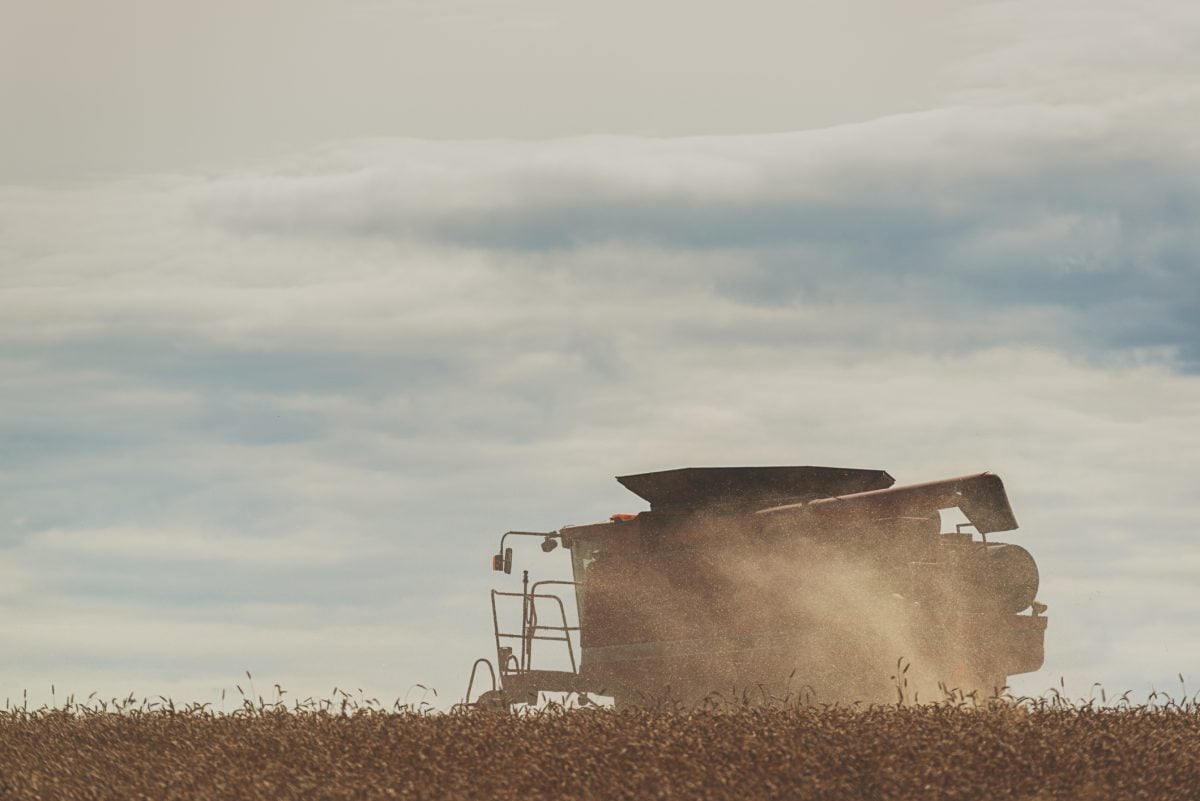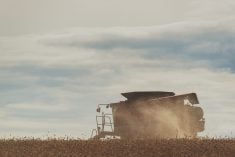EDMONTON — Minneapolis was once known as Mill City, the flour milling capital of the world.
Dozens of mills lined the Mississippi River at the city’s peak in the late 1800s. The Washburn A mill could grind enough flour in a day for12 million loaves of bread.
The boom times for flour mills in Minneapolis and the position of wheat as the main crop in Minnesota are long gone. Wheat is under increasing pressure from more profitable corn and soybeans.
Researcher Jochum Wiersma doesn’t know if wheat will ever be king again in Minnesota, but he hopes his research on ways to increase wheat yields will give it a fighting chance.
Read Also

Russia’s top agriculture official blames low global grain prices for export slowdown
Low global prices for grains, Russia’s main agricultural commodity, have caused a sharp fall in exports in recent months.
Wheat acres across the United States have dropped from 21 million acres to 12 million acres since the 1980s. Minnesota has seen an even steeper drop from slightly less than three million acres to slightly more than one million acres as more farmers replace wheat with soybeans and corn, said Wiersma, a small grains specialist with the University of Minnesota.
“Wheat is really under pressure in Minnesota,” he told farmers during FarmTech 2012.
Soybean acres in the state have increased to seven million from five million in the 1980s.
It’s a similar story with corn, which has replaced traditional wheat acres because of the later harvest season.
The farthest north line where corn is grown used to jump 16 kilometres a year but is now making leaps 80 km a year.
Wiersma is worried.
“These guys harvest 140 to 160 bushels per acre of corn. They are comfortable leaving it in the stand in November and even harvesting it in March. The advantage is they can harvest it when the snow has melted and the ground still frozen,” he said.
“They’re getting comfortable with those risks.”
Wheat yields must increase and the crop become more profitable If it is to continue being grown in Minnesota.
“We have to stay competitive with the other commodities,” said Wiersma, whose research is trying to keep wheat profitable and in the rotation.
“We’re trying to push limits.”
Wiersma’s research has discovered a few keys to keeping wheat yields high:
* Getting the ideal number of seeds in the ground in the spring is key.
“Stand count is the easiest and fastest way to start out right,” he said.
It is a way for farmers to verify whether they achieved their goal of calibrating drills and getting the correct amount of seed in the ground.
The old recommendation of 28 plants per sq, foot has increased to 30 to 32 plants per sq. foot, depending on the variety. That number should increase by one plant per sq. foot for each week of delay past optimum crop seeding.
Wheat needs to be seeded as early as possible to take advantage of cool spring weather.
“I’d like to get it in the ground every year by the first and second week of April if I could get away with it.”
April 15 for northwestern Minnesota is ideal. Seeding earlier than that is great, but seeding later is a worry.
* Fungicide management is key to suppressing disease and maximizing yields.
The recommended time to apply fungicide to suppress fusarium head blight in wheat is Feekes 10.51, which is the growth stage when the spike is completely emerged from the boot and the pollen set has just started.
There is no disadvantage in delaying the application in the absence of leaf rust pressure.
Feekes 10.51 works for the entire spectrum of diseases.
There is no penalty for delaying from Feekes 9, when the flag leaf is fully extended, if pressure from leaf rust and other leaf diseases is light.
There also seems to be no penalty in delaying fungicide treatment to Feekes 10.5 to control all disease and suppressing fusarium head blight in a single application.
“In almost all scenarios, you can get away with a single application at 10.51.”
* There doesn’t seem to be a way for farmers to achieve both high protein and high yield.
Wiersma said he is often asked if farmers can blend high protein and high yielding wheat to achieve ideal crops that are less susceptible to disease and lodging.
He has blended wheat varieties at 3:1, 1:1 and 1:3 but concluded it was too difficult to match ideal spraying times with two different wheat varieties.
“Little or no advantage to blending. It only complicates things.”
* Achieving the right balance of nitrogen to get the elusive high yield and 14 percent protein combination is important to maximizing profits.
Added nitrogen tends to boost wheat past the ideal 14 percent protein level. European farmers use split applications to boost protein levels from eight or nine up to 14, but Wiersma said it doesn’t seem to as effective in raising protein levels in Minnesota.
Added nitrogen usually maximizes grain yields more than it increases grain protein. Some research shows the amount of nitrogen needed to boost protein is higher than the amount needed for maximum yields.
“We have to go beyond the amount of N needed to maximize grain yield,” he said.
“The challenge is how much N do I need to get to that absolute number of 14.”
Field scale research has shown a split application of nitrogen with 10 gallons of water and 28 percent nitrogen can bump protein levels by half to one percent.
“That is the response to expect.”
The split application needs to apply nitrogen at the watery ripe stage. Do not tank mix it with a fungicide.














